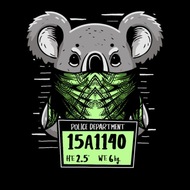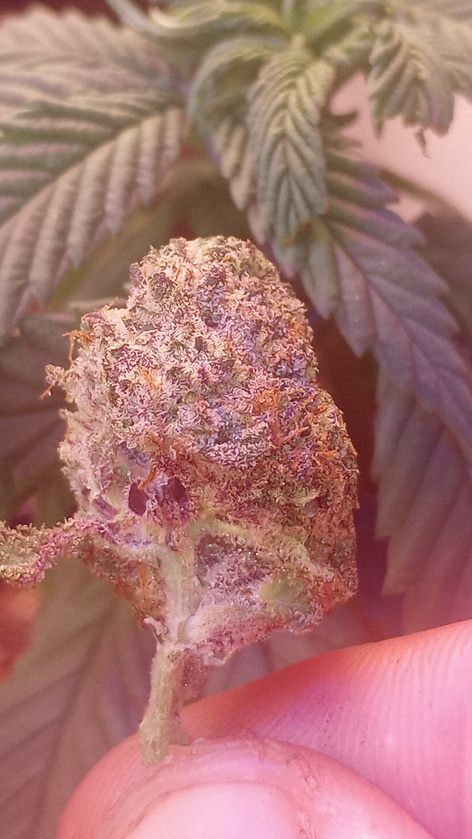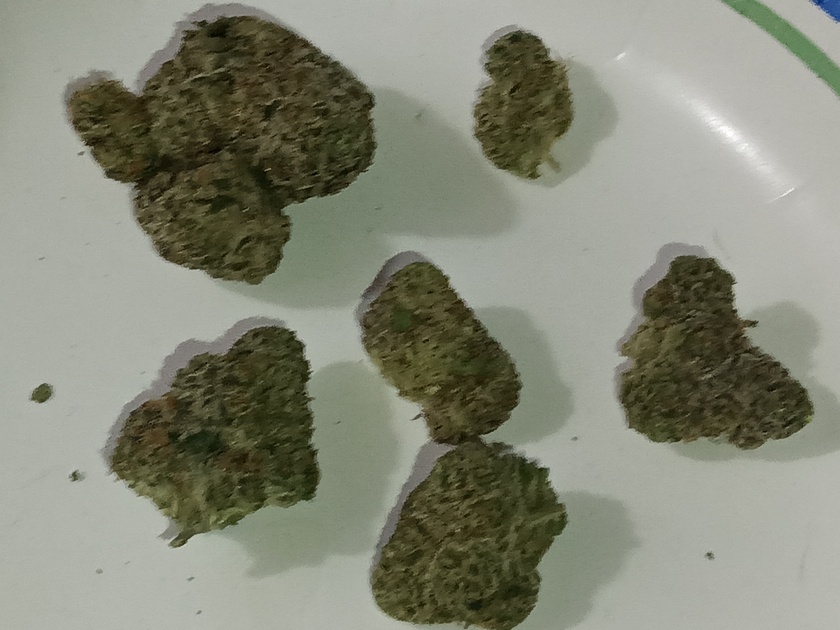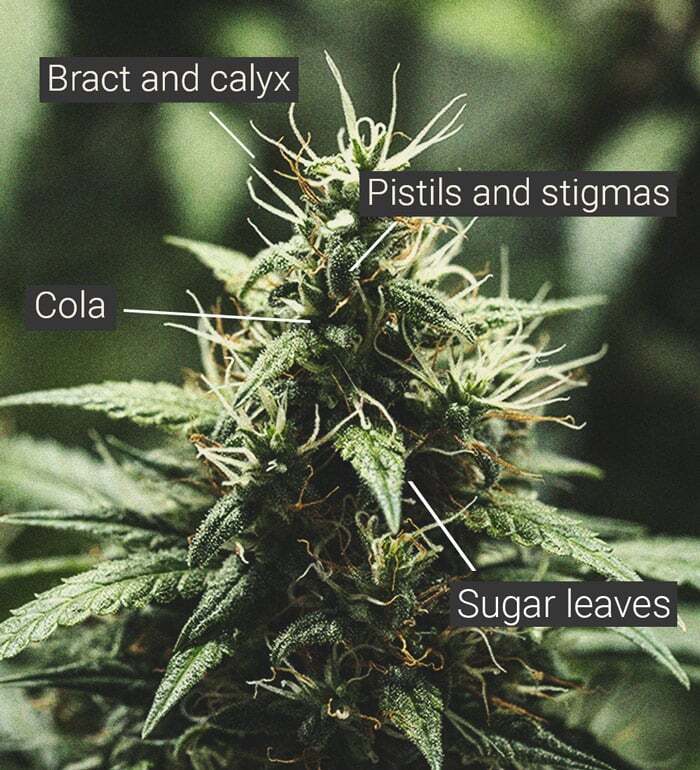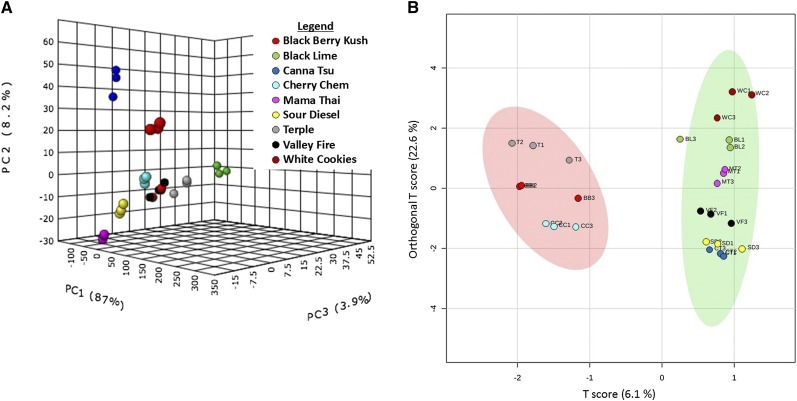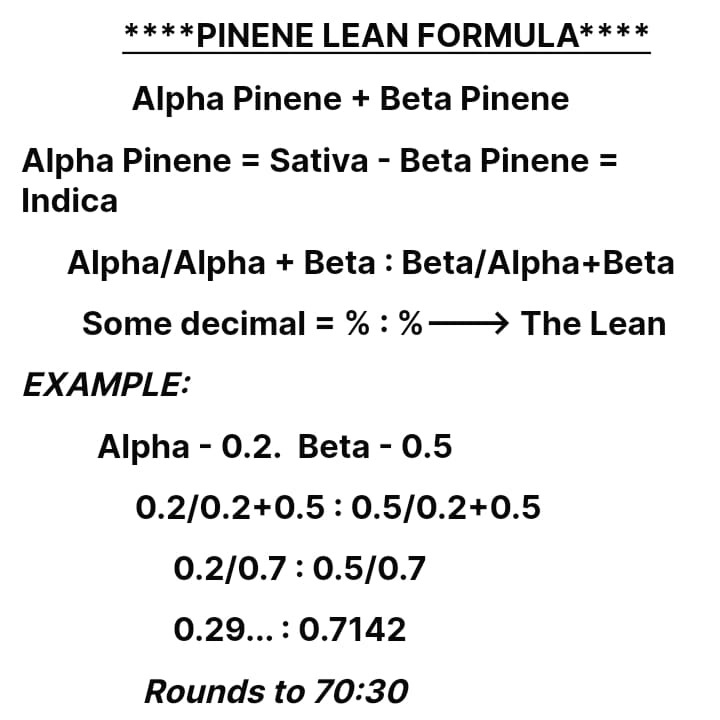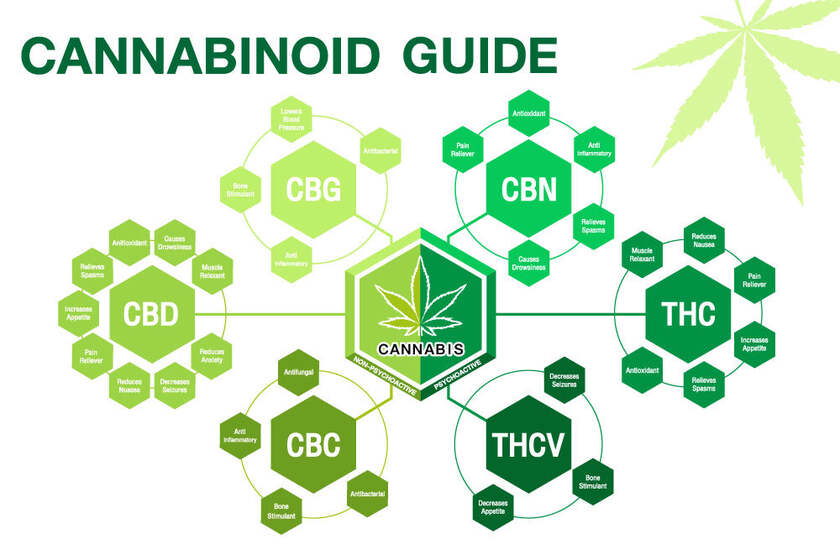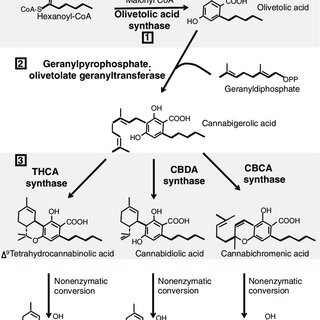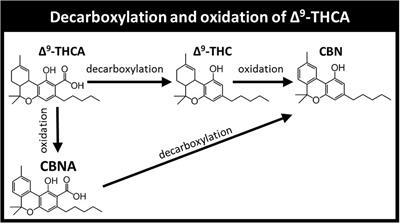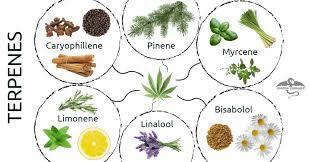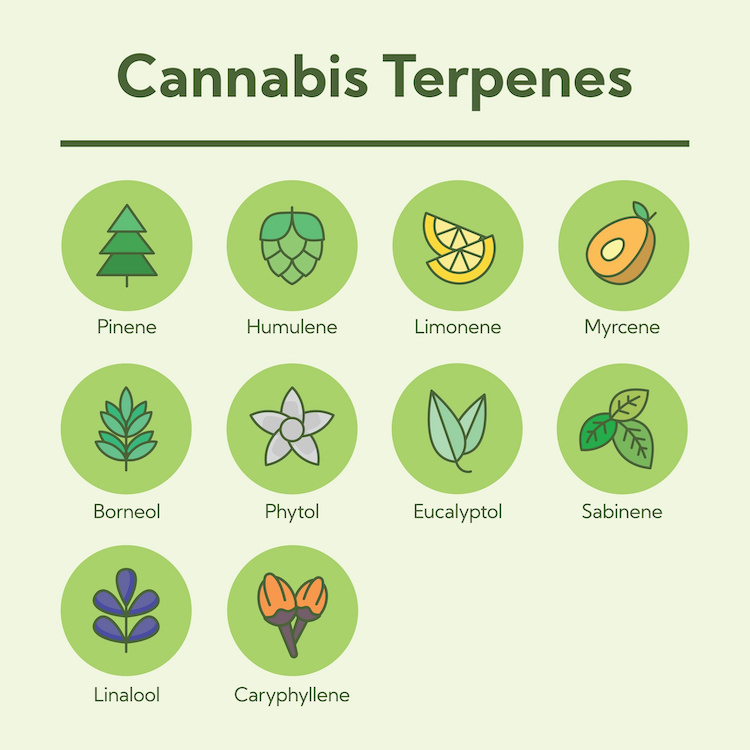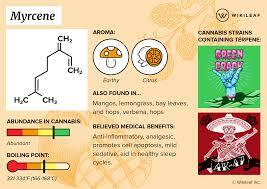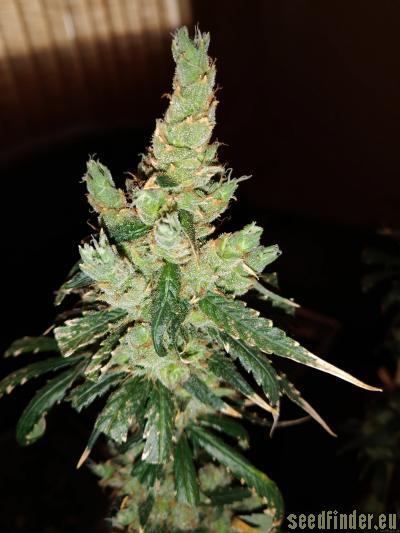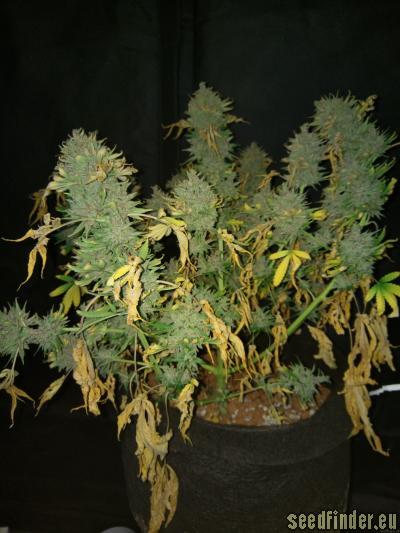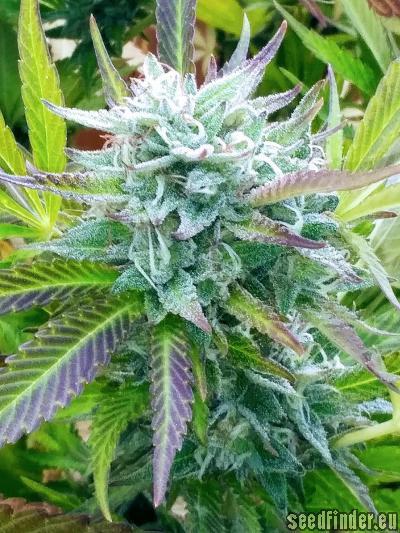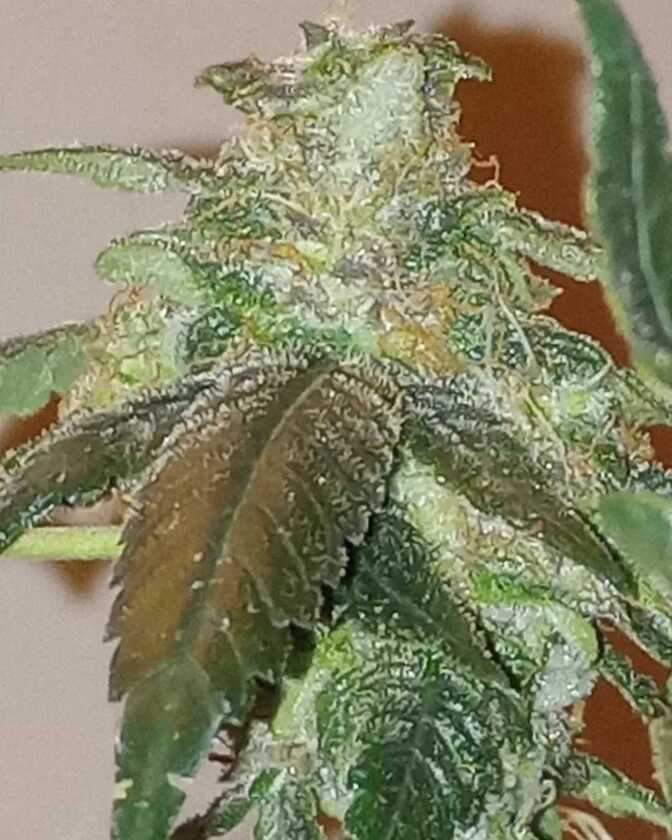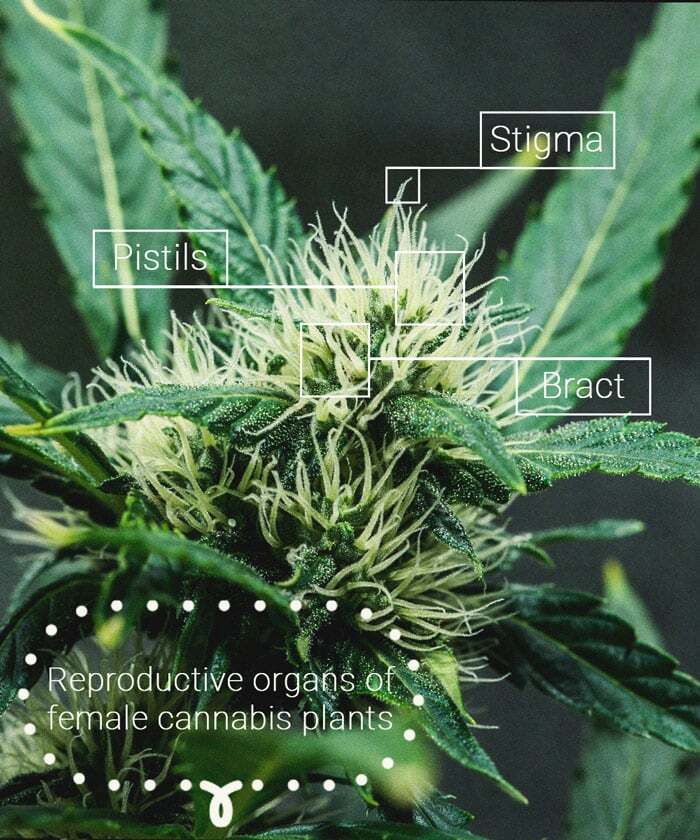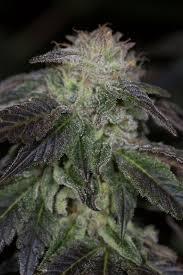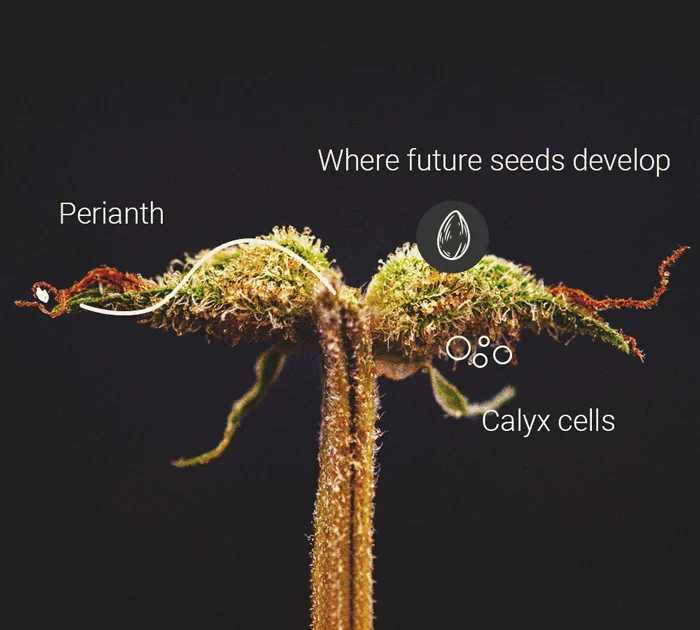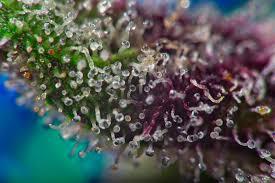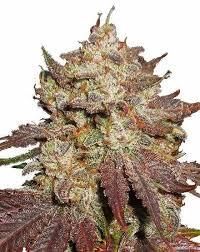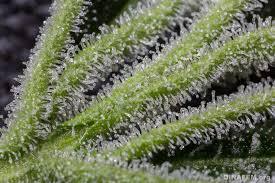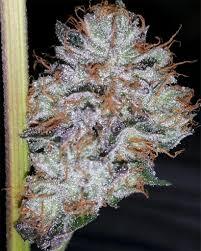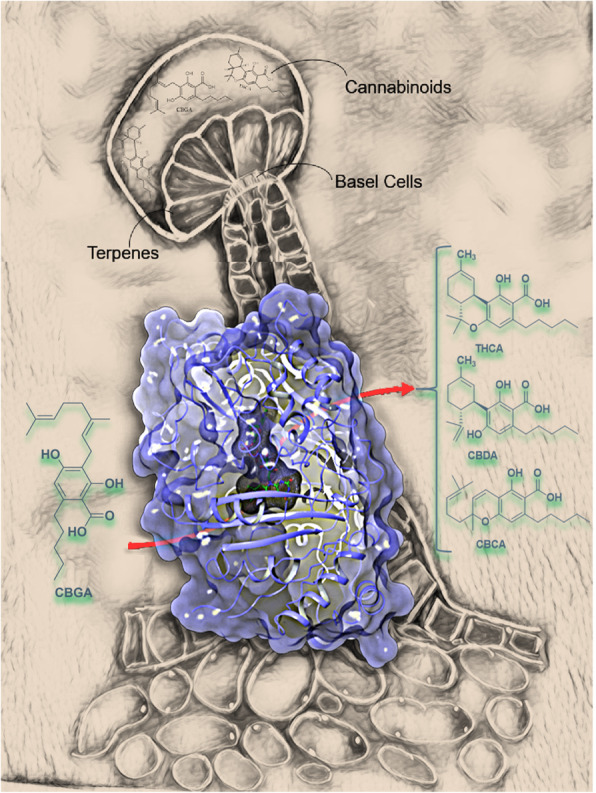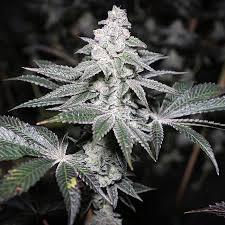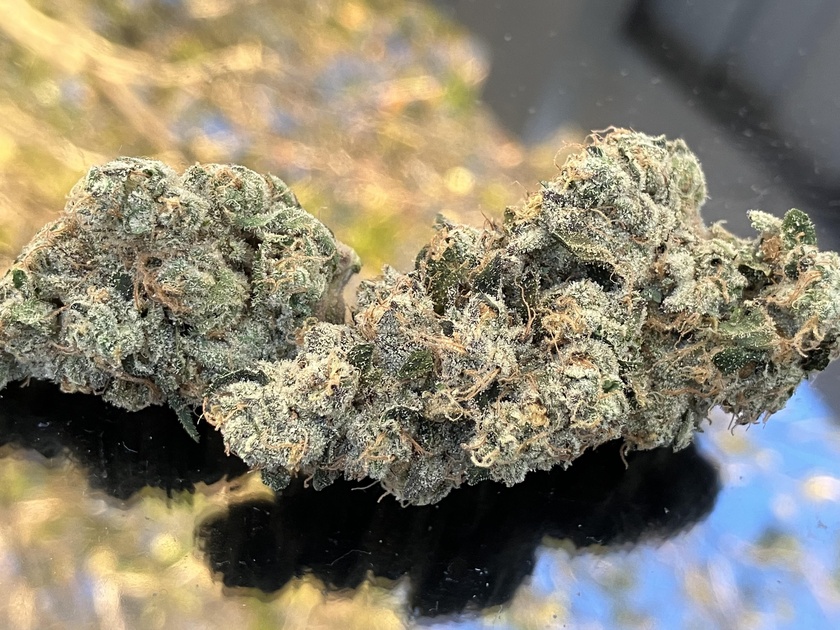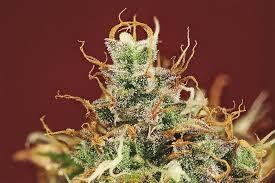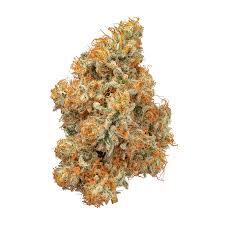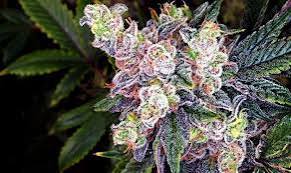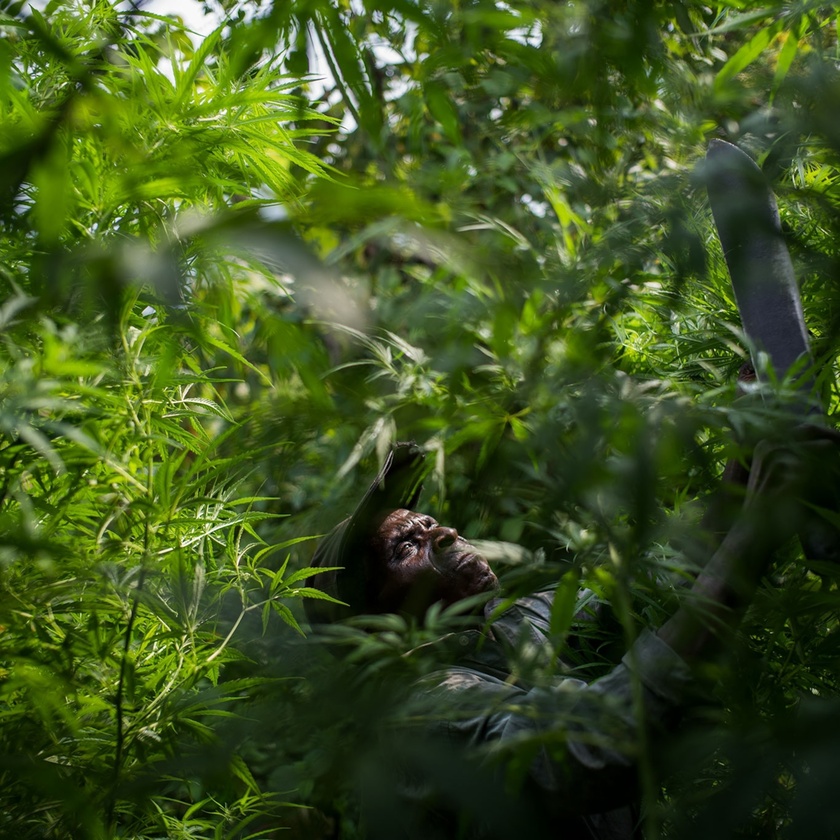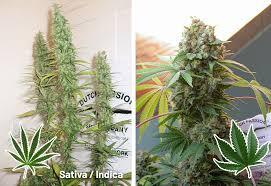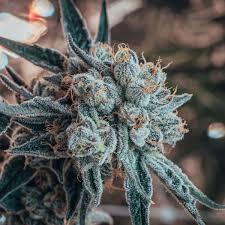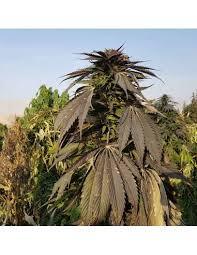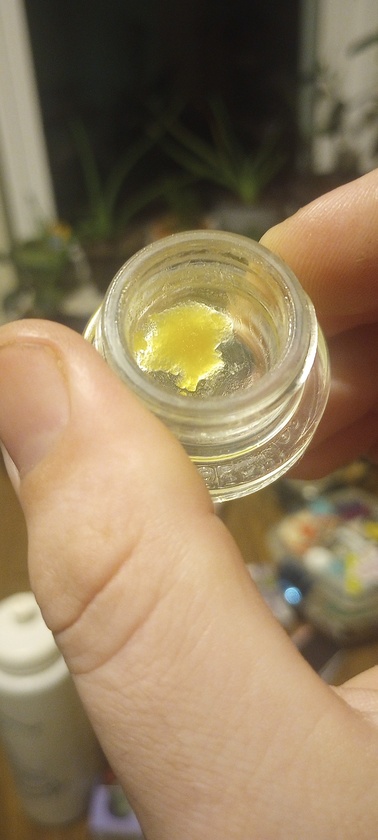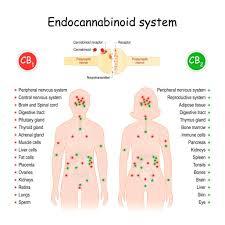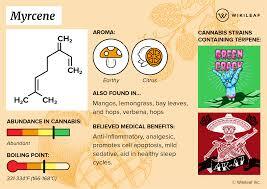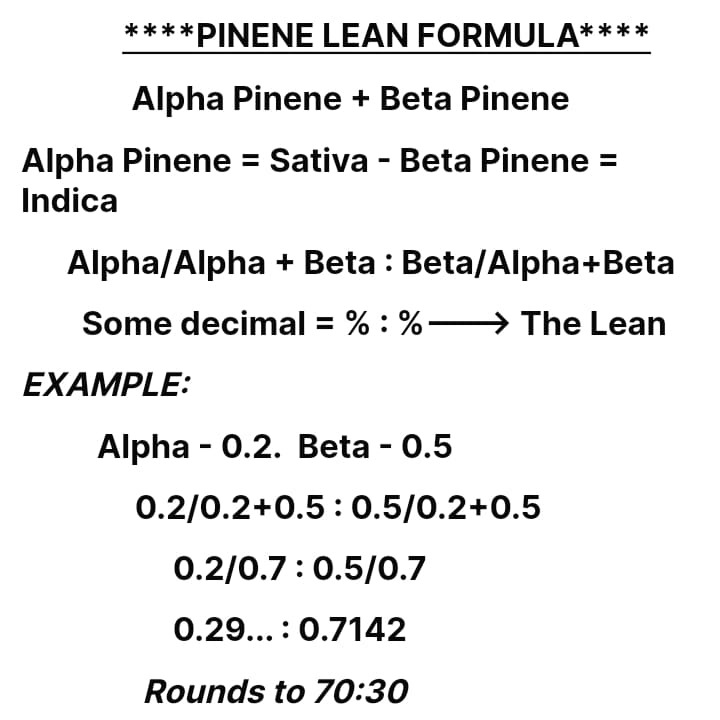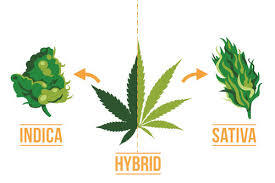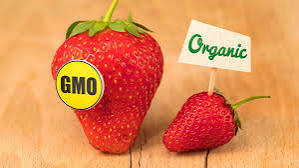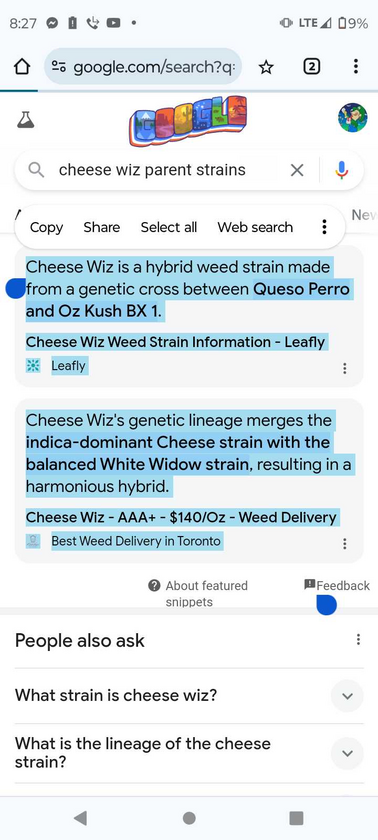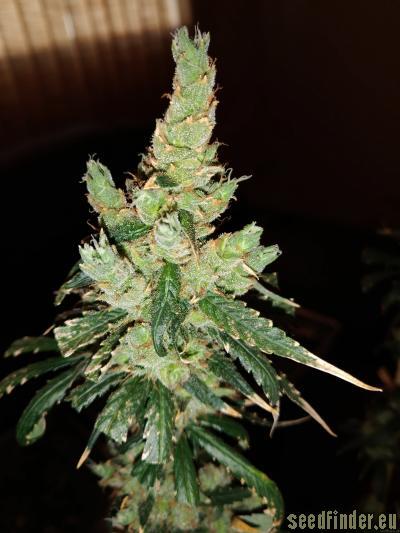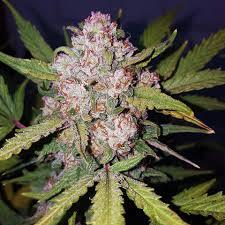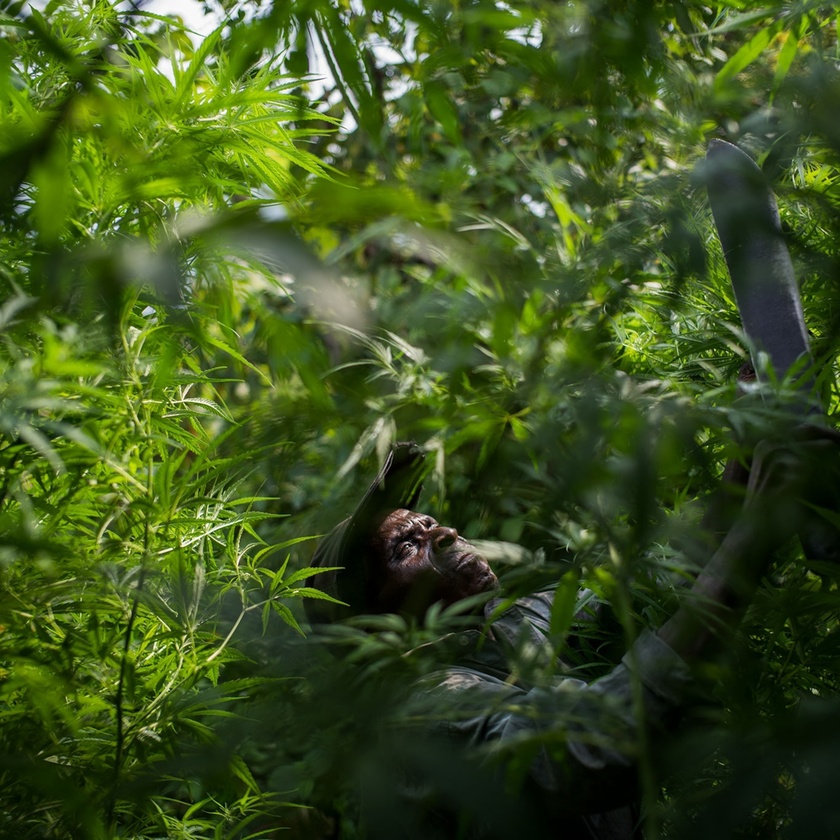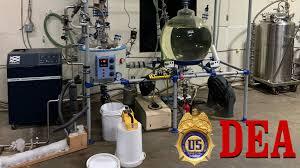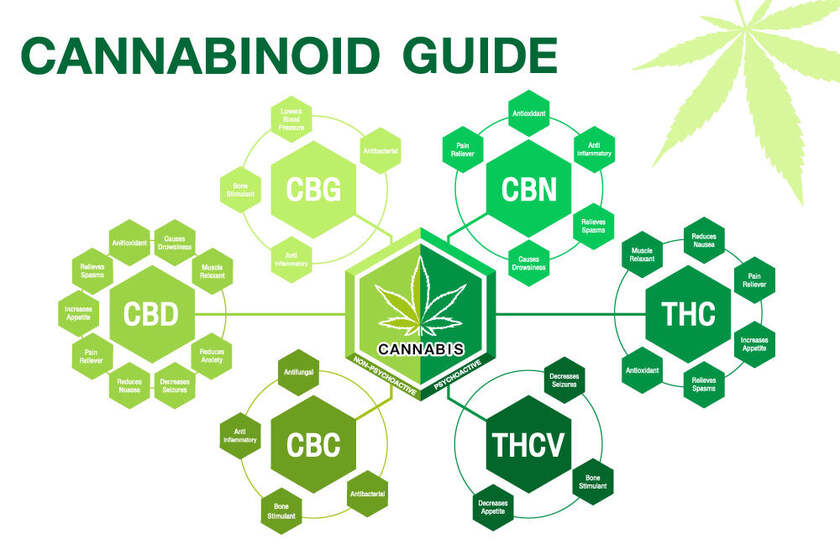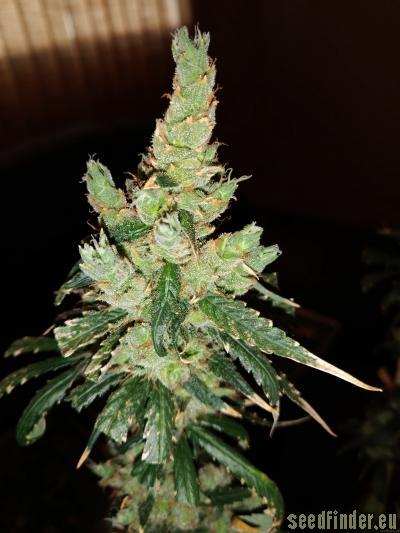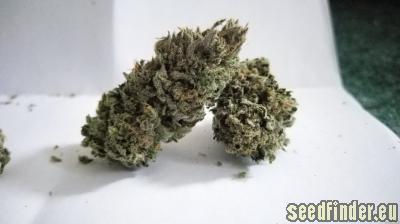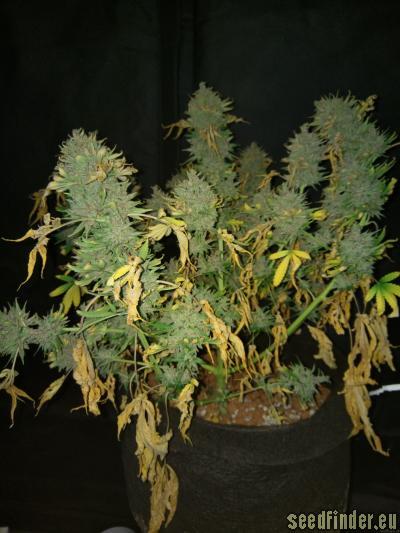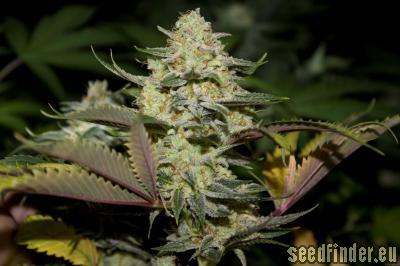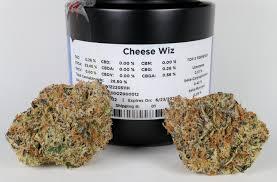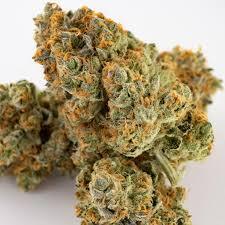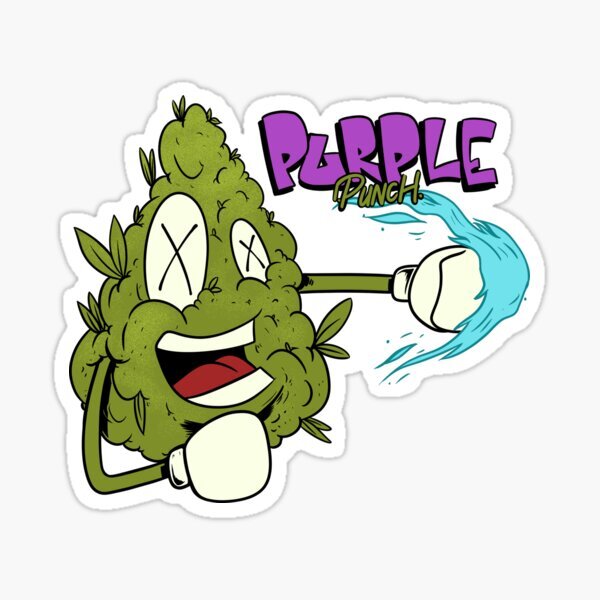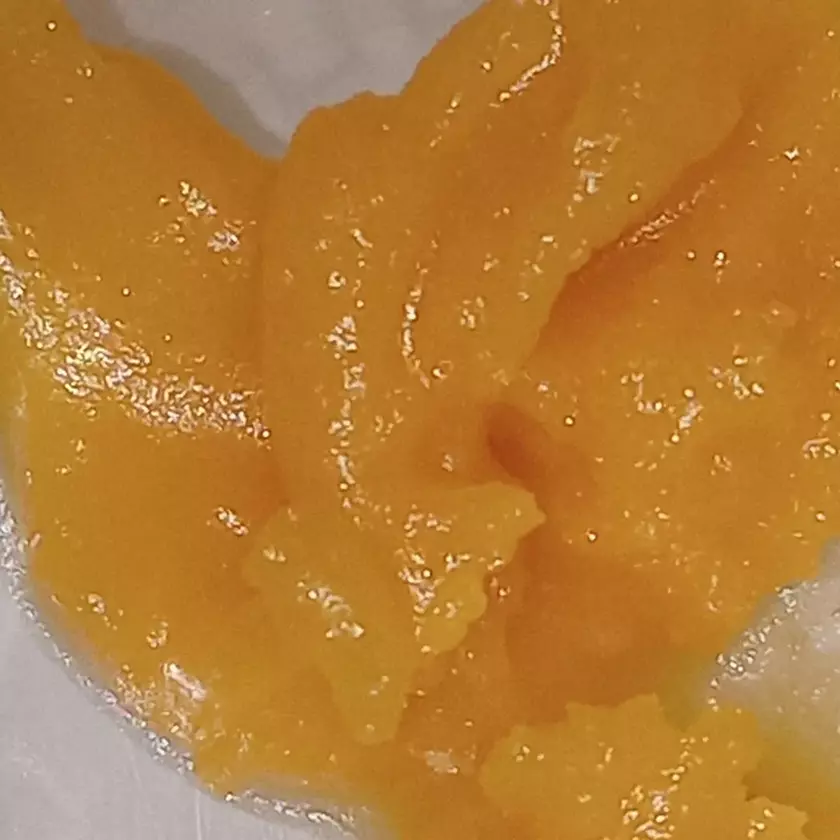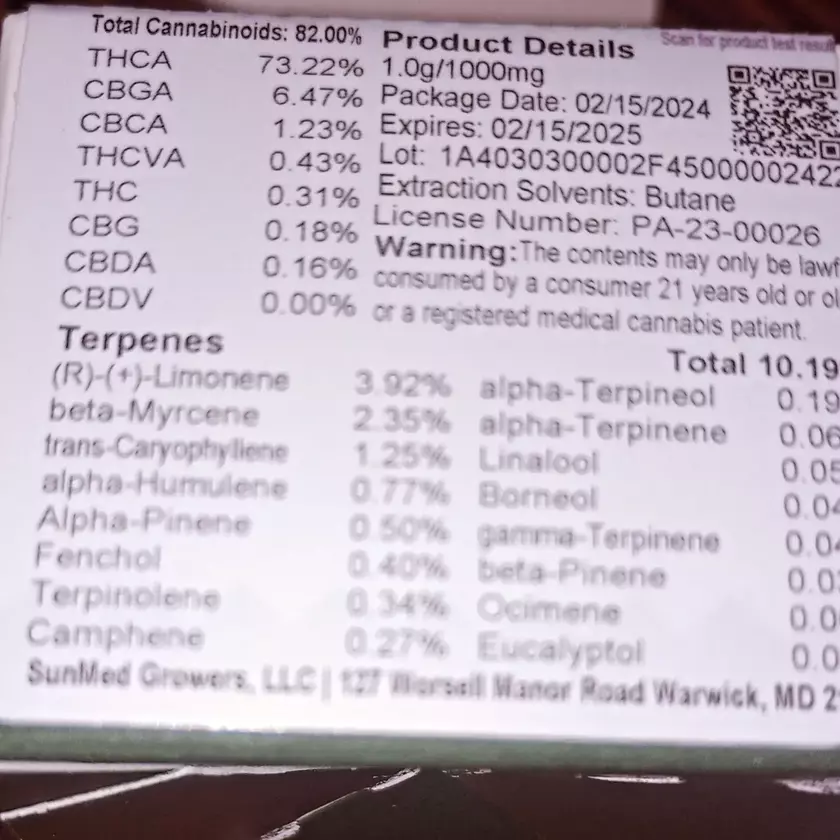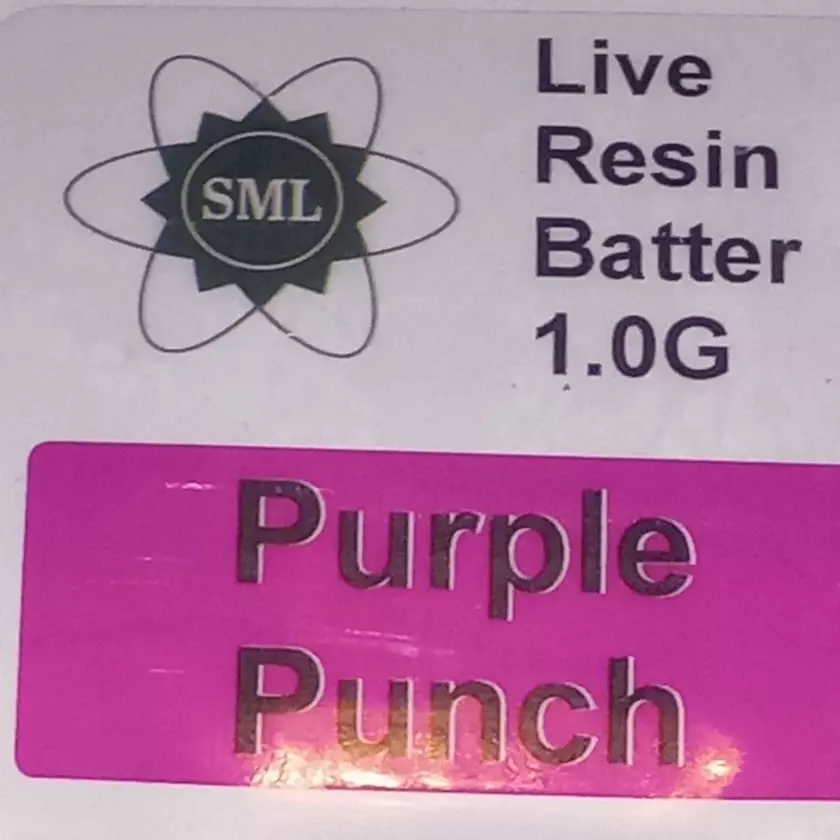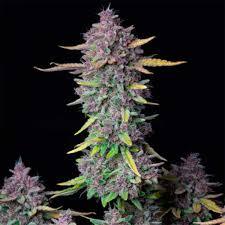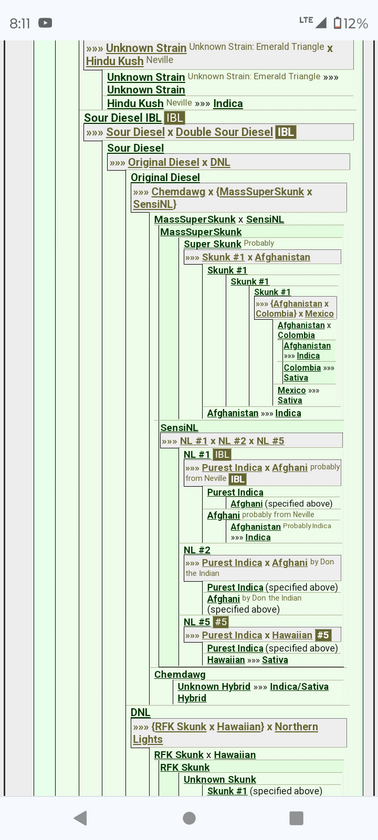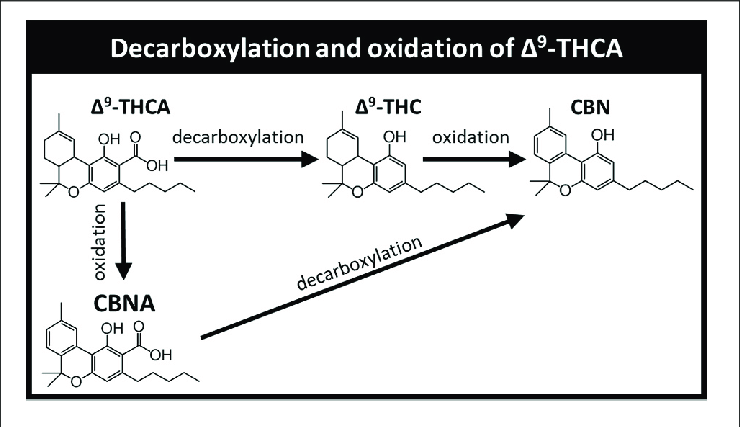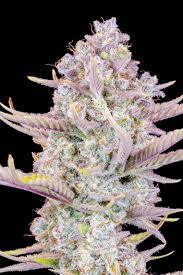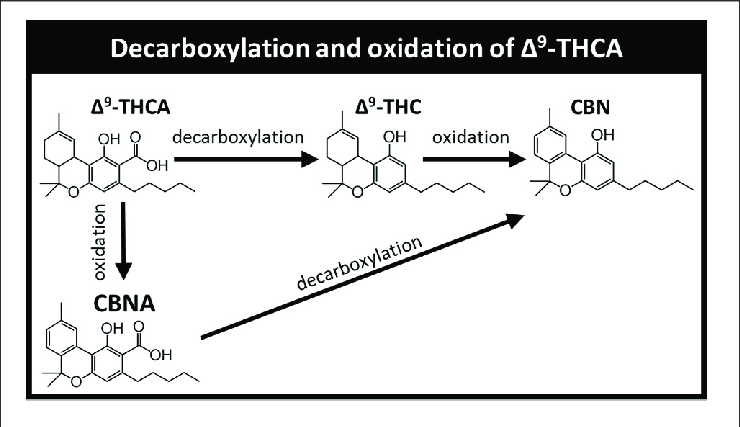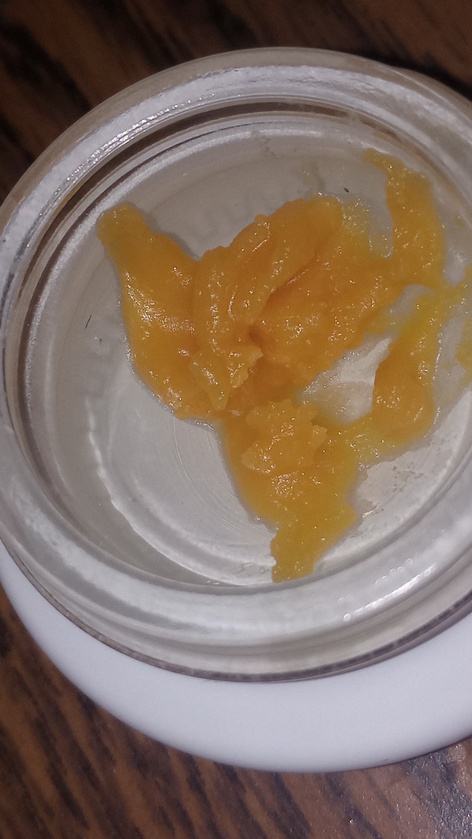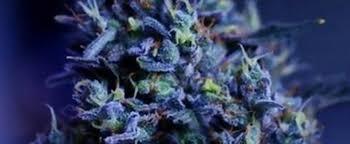
The Pinene Lean Formula is an significant aspect of the evolutionarily adaptive TERPOLOGICAL Discernment and Assignment Developmental Cannalytic Protocol as it CAN BE a staying point from which to understand the true lean of the strain. Why would I want to change what the industry or your dude tells you? Most cannabis is determined to be Hybrid today and the lean IMO is not applied to the strains as scientifically as they could be, as obviously a confirmation of analysis based lean confirmation is likely more accurate than a guess from punnet squares & knowledge of the parent lineage. The protocol roots out the parent lineage contribution through representation thereof in the Terpene and Cannabinoid expression.
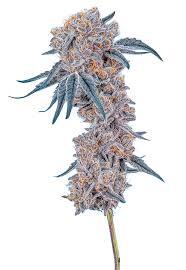
The formula is as follows before we discuss YumYum and why it is a premium example to validate at least what I have deemed the null 2 of the Formula.
****PINENE LEAN FORMULA****
Alpha Pinene + Beta Pinene
Alpha Pinene = Sativa - Beta Pinene = Indica
Alpha/Alpha + Beta : Beta/Alpha+Beta
Some decimal = % : %---> The Lean
EXAMPLE:
Alpha - 0.2. Beta - 0.5
0.2/0.2+0.5 : 0.5/0.2+0.5
0.2/0.7 : 0.5/0.7
0.29... : 0.7142
Rounds to 70:30
Indica Dominant hybrid
Now this part may seem a bit different to people but it's the best I have at the moment. When examining the profile Terpologically the first thing I do Is take in the over all Terpene superclass arrangement and which Terpenes are present.
I'm
For example, if I see Beta Caryophyllene I'm immediately gokng to start with indica expression dominance in my reading. That would change though say if bCP was second to Terpinolene. Terpinoelene is characteristic of Asiatic sativa and thus would lean us moreso back to sativa. And significantly moreso because Sativa is always more impactful on indica expression when seen than is Indica on Sativa. In that I mean your not going to find many Indica presenting Sativas, but there's plenty of sativa forward presenting Indicas with terpinolene dominance.
It works well though because teroinolene is anxiolytic through calming the mind and helping focus and thus enhances the indica experience moreso in modern cannabis than. It does in Sticks today. I would want to have beta Caryophyllene present in the sativa with the Terpinolene and either have a lower THC level which is less likely in sativa or have the Myrcene leel lowered so the impact of the psychoactive proliferation of ThC to CB1 receptors isn't causing the freak out effect.

There is a cure for that, which is more beta Caryophyllene or less Myrcene, or alternaticely as I said less THC (Delta 9, so Delta 9 or THCa.) one cam actually ingest Beta Caryophyllene orally bc it is a dietary Terpene and can be introduced into the Endocannabinoid system through the Gut, where those CB2 receptor sites are which absorb Myrcene to proliferate the sedation of BCP.
Remember that Beta Myrcene like all sesqui Terpenes is proloferative by nature, which means it helps transport other molecules, like THC across the blood brain barrier or causing psycjoactive intensification proliferating beta Caryophyllene on cb2 receptor sites with THC causing enhanced sedation.
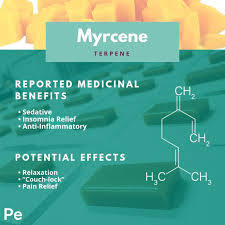
Therefore with all of that, and by observing the bud structure if I wish to include that, or if I'm studying a concentrate which is most often I will look up the strains pictures to study the macro and micro structures of the cannabis because these correlate to the Terpene and cannabinoid expression as well.
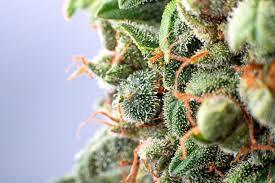
Sativas are fluffy and elongated and indica denser and more.bulbous. as the indica becomes more sativa the bulbous nature begins the triangulate rather equilaterally. As the sativa increases the equilateral nature elongates more and density lessens as color brightens, pistils lengthen and lighten in color, & trichome heads get smaller with sativa but there's more of them usually.
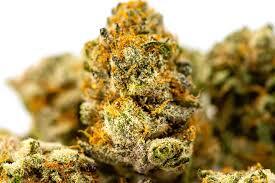
Indicas trichome heads are typically visible to naked eye and don't look like hair covering like sativa. These characteristics increase or decrease depending on where the pollen falls. Indica pistils are short stunted and darker where sativas stretch like their buds.
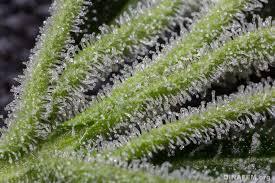
Makes sense evolutionarily in a humid jungle environment to make your pistils elongate to more easily grab pollen, where as an indica in dry cl ok mate wouldn't need this. This is the evolutionarily adaptive aspect of the protocol in action.
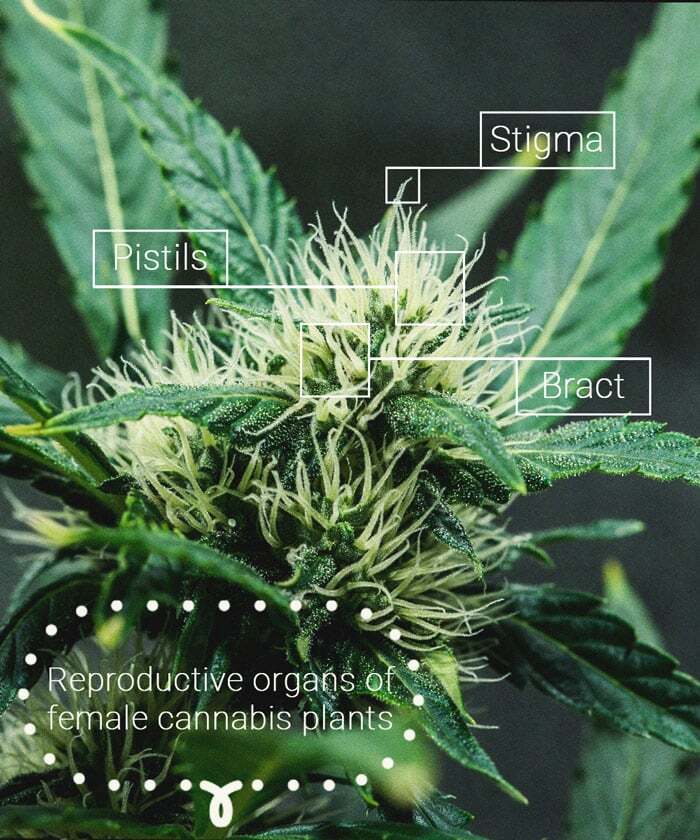
The micro structure of indica is a smaller version of macro structure while static has a more spikey like micro structure & less of an organized microstructure, often it isn't in knots or gatherings at all but kind of just wound into itself in an elongated fluffy fashion. . . Or spikey.
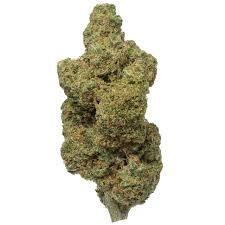
Obviously the aromatic presentation is also going to be impacting our decision making before we begin the actual scientific number part of the assessment. Brighter fruitier more vibrant less earthy less spiced fruit lemon and orange notes are sativa.
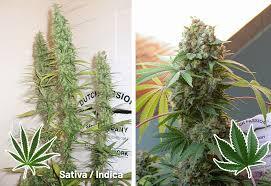
Think the expression of the vibrancy of a jungle.
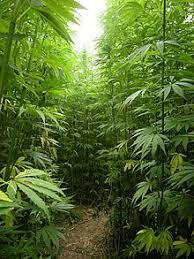
And indica has an orange, but it's much more rank like beer like rank due to one of indica characteristic Terpenes Humulene. Indica trends to be earthy, herbal, spicey, sometimes orange or a grapefruit lean. Think Afghanistan desert steepe when you think Afghani, hot dry days and cold dry nights.
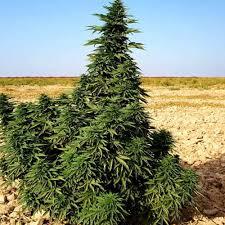
With ALL OF THAT, which is a lot to write but isn't really a lot to do as your acting it out honestly, now we look to the pinene lean. If we see that the answer to the formula is going to go against what all those other indicators are telling us, then we place a big question mark there and start examining further. . . As the answer lay in the profile. To move.on there are two examples of the pinene lean formula not working correctly.
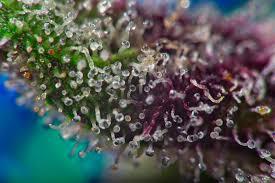
This is what I have called NULL 1 and 2. NULL 1 is approximation of Opposition and null2 is opposition in totality. The former indicates that there is a somewhat hybridized landrace amalgam of parent genetics that extends beyond a traditional, what I call Hybrid Landrace. A Hybrid Landrace imo isntaking two Landrace and hybridizing them tougher, and this is EXACTLY what YumYum aka Blueberry yum yum is, hence part of the significance.
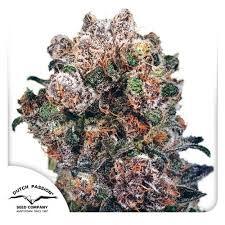
The later is an indicator that the expression of the actual strain is 100% opposite what your senses otherwise tel you outside the lean formula. This is indicative of a total failure of the pinene lean formula. This therefore meanss that there inherently has to be a connection to LANDRACE purity in genetics sinply sue to the nature of the creation of the formula in its protocol.
It is a protocol to seek out the landrace expression in hybrid cannabis, and by indicating the failure to correlate to the Terpological association through mathematics even, indicates purity in lineage. Which again Blueberry yum yum Validates.

So how is Blueberry YumYum Validating my protocol. ? I just mentioned it above but it needs detailing for people who created to understand to do so.
First we look at the Blueberry yum yum parent strains before.doing the protocol this time. I like to keep myself.partially.blind and I usually do tht by not researching the lineage prior to doing the Terpene and cannabinoid discernment.
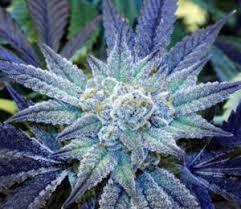
This time I just so happened to have looked up the genetics prior to the reading. Upon doing the read I seen tht there is Terpinolene dominance in the weed concentrate at 2.65% which is immediately followed by Myrcene at 2.15%. the next closest Terpene in thenPrimary heirarchical category is Limonene at 1.41% & Trans Caryophyllene at 0.84%.alpha Humulene 0.44% Fenchol 0.29%.
What is missing here for what I would consider a standard Indica.profile, if we take terpinolene out the equation, is Linalool grouped along Humulene. However, the increased Fenchol does in a way makeup characteristically.for tht indica Presence. But we have Terpinolene dominance & Trans Caryophyllene.
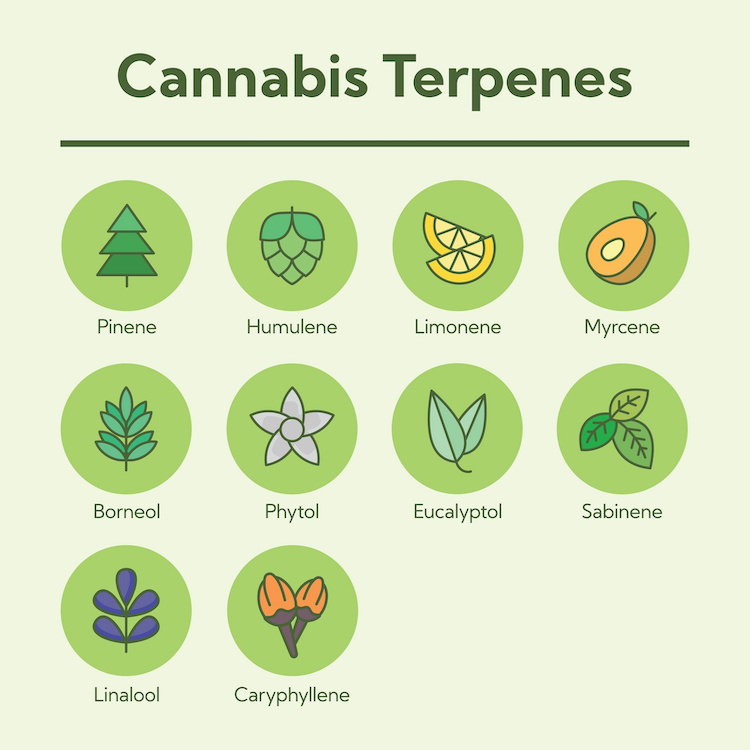
Well the trans Caryophyllene remember isn't a tell either way because it is the most common form of Beta Caryophyllene in nature, so while beta Caryophyllene is expressive of indica in its sedative contribution that doesn't mean Trans Caryophyllene is necessarily only expressive of sativa.
Terpinolene here would make one instantly start into sativa thought. But we can't because we know we have Humulene at the standard indica placement around Trans Caryophyllene and Fenchol, as well as practically an entire tertiary level comprised of indica Terpenes: Eucalyptol, bisabilol, borneol,a terpineol.
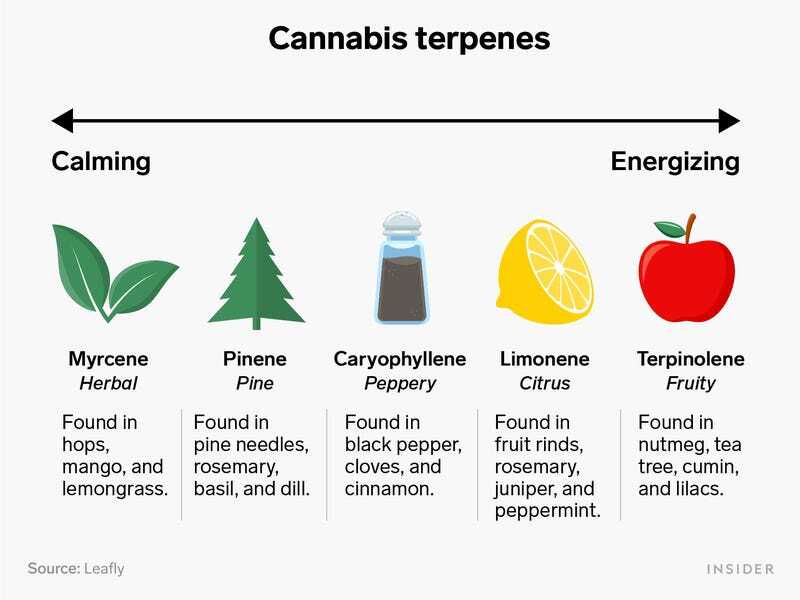
Knowing what I do in this moment reading the profile, tht this is a cross of Blueberry And Durban Poison & that it.is labeled as 80/20 INDICA dominant hybrid. I like this considering the level of Myrcene present is one which would cause some jittery mind racing with hyped up THC levels. As low as the Cannabinoid levels may express in Blueberry YumYum, the Terpene profile brings out the experience perfectly and it isn't an unpleasant over powering experience.
The lower THC level is paired just right with the amped Myrcene that's far higher than 0.84% trans Caryophyllene, over 2x which is approaching Myrcene gets freaky territory. I have discussed the tendency of Myrcene to impact CB1 receptors in certain Myrcene heavy combinations many times. So I'm aware tht even though terpinolene and amped Myrcene and trans Caryophyllene looks sativa on the surface, but I know it's Indica.
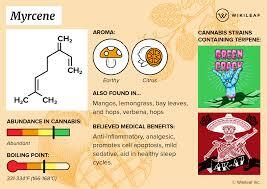
Now there's reason the strain is expressing so dominantly in sativa characteristic yet pushes off an 80/20 Indica. The proximity to Landrace Characteristics and this is exactly what the Null 2 of thenoineme Lean Formula indicates. We have in Yum yum an Alpha Pinene level of 0.14%. this is the only level present, there is no Beta pinene. This gives us a totality expression, which says that this strain is the opposite of what we already know it is. This means that the protocol that has been developed to find the landrace characteristics amongst hybrids, doesn't work when the proximity to landrace is literally parent genetics.
A Null1 is when the expression equals an opposite, so 80/20 Sativa which is usually an indicator there is similar.proximity to landrace issue causing this, but it would be more for example, Blueberry x big bud x Purest Indica. That maybe an example of Null 1 lineage. I haven't drawn the exact lines in proverbial sand yet but they're differentiated enough to be novel circumstances in each.
The reason I believe there's this circumstance at play is the strains in particular that contribute to the parents of YumYum. Blueberry is a cross.of Afghani (indica landrace) x Thai (sativa landrace) x Purple Thai (Hybrid Sativa). The purple Thai here is where the only complexity in this lineage exists, and speaks the sativa expression present. It is a cross of Chocolate Thai X Oaxacan Gold.

Chocolate Thai is a very pure sativa crossing, and here we hit landrace. Honestly, I would usually arrange this to be a Null 2 answer, I mean rather this what I would expect to see with tht being the case. But the Durban. poison & 2 other landrace make the difference,.particularly the Durban Poison iMO. Oaxacan Gold.Is another sativa Landrace genetics. Knowing the genetics of Purple Thai which I previously was unaware of before this article, it even further more validates both the null presentation but also my past observations and my notations regarding Durban Poison.
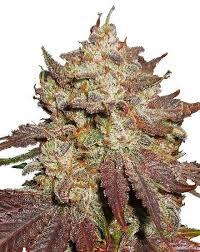
Durban Poison is an extremely unique strain of cannabis. It is a landrace strain, but because it was cultivated by the Bantu tribe for both use as a material and as recreational smoking and medicinal / Tribal healing. This means they cultivated it forms centuries just as we cultivated cannabis. And one could imagine they would want a denser than fluffed up landrace. I believe that's partly why Durban Poison has a unique structure apart from most Sativas. It is more bulbous than others, has a darker appearance and even shorter pistil lengths.
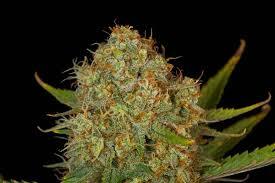
The later there, the pistil lengths is of importance because that indicates the weather over time of a plant in an area. Humidity which we would expect in a port city like Durban South Africa, causes elongated pistils as seen in jungle cannabis. The shorter pistil structure speaks to the slightly stivas like slightly indica savannah like environment of Durban Posions endemic Environment. While some may argue it's cultivation by the bantu Tribe makes it a hybridized cannabis, if it is it falls under hybridized landrace IMo.
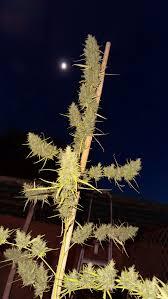
This unique sativa presentation ofnDirban Poison, even presenting a calmer smoking experience than most Sativas, along with the Afghani landrace is what pushed this cross of all these stivas into an 80/20 Indica lean. It also makes me wonder about.further connection between Alpha Pinene and sativa strains present, or a thought I haven't had yet does sativa at higher presence like this with less indica cause the elimination of Beta Pinene in some way.
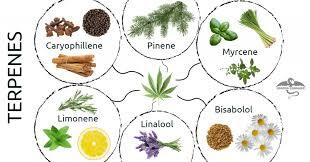
The point of it all is tht the strain is a 80/20 Indica, and my Pinene lean formula cam eto a correct answer indicting tht this is what it is, a strain with so much sativa contribution the indica characterisric is over ridden totally which also indicates a closeness in proximity to landrace genetics. . . Which he see here in spades. Remember though, this is speaking to the parent contribution of how we arrived where we are at an 80/20 Indica.
And it's important to keep in mind that 80 /20 Indica is as about as forward sativa expressing as they come. It is Terpinolene Dominant, even the flavor pallet presentation is a juicy fruit bubblegum like flavor with.an herbal spiced undertone. You really can taste the Myrcene and terpinolene in YumYum.
The cannabinoids are a bit more clear as to the lean of the strain. Remembering that heightened DELTA 9:is sativa characteristic and higher CBD is indica, we have 0.92% THC ina lice concentrate which is definitely n indica level of THC. Also we have a super low level of THCa especially.for a live concentrate, which is a total cannabinoid profile of 69.38% and a THCa of 59.65%.
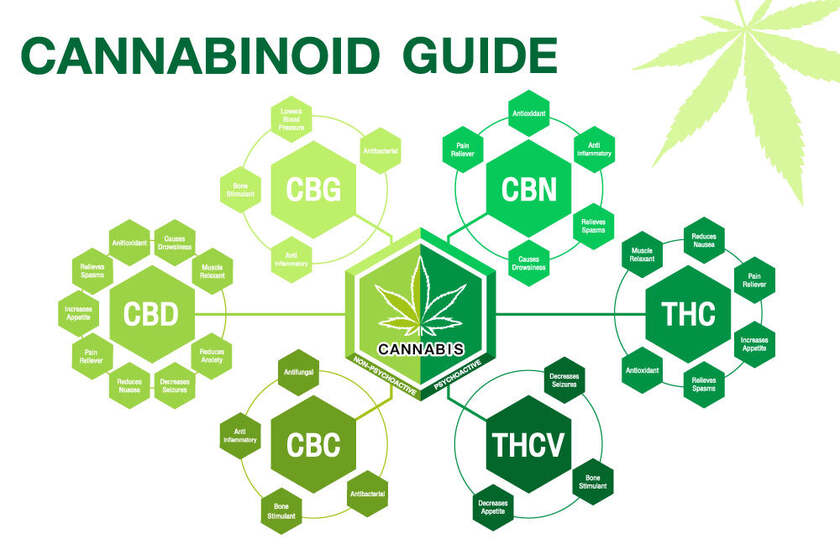
I say again though, this strain is one I HIGHLY Reccomend to experienced users and non experienced alike because this is a perfect exmplenof Terpenes helping to create the buzz, that the sun is more than whole ofnots parts. We still see Durban Posion making it's THCVa characteristic present, common in strains with Durban as a parent. CBGa is highly increased past the normal indica level of 1.5% in a live concentrate to 4.4%.

CBG is actually increased to 1.5%. This is sativa characteristic, for sure. The CBDa, CBD, & CBNa all also speak to indica expression. The other cannabinoid is CBCa at 1.47% which is again sativa characteristic. So it almost seems as if the Sativa characteristics are expressing more.in the Cannabinoids than the Terpenes, and the indica is heavily expressed jn the Terpenes.
If your able to follow my logic along through the genealogy through purple Thai, and the indica in Afghani with the rest of the sativa, but the oddity of the indica like Durban. Poison Landrace sativa. . . .all equating to this unique alagm in the confirmation of analysis.
I wanted to make a note here that the genetics being referenced in this example of Blueberry YumYum which was actually simply labeled YumYum, is the cross of Blue every x Durban Poison. Even though sweet Blueberry yum yum and the other cultivar do harken back to Durban Poison lineage, I would like to know if they would express pinene.lean as expected. I think it would be a very interesting study to run on the other two types of Blueberry YumYum.
Advoc8 always
Meduc8 Daily
Don't break the law while your breaking the law.
